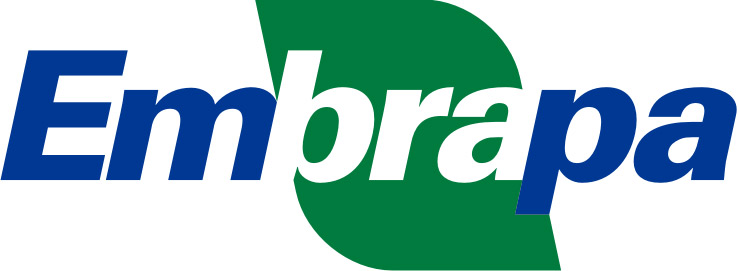Please use this identifier to cite or link to this item:
http://www.infoteca.cnptia.embrapa.br/infoteca/handle/doc/1169072Full metadata record
| DC Field | Value | Language |
|---|---|---|
| dc.contributor.author | SATHYAPALA, S. | |
| dc.contributor.author | MOORE, B. | |
| dc.contributor.author | ALLEN, E. | |
| dc.contributor.author | BOSU, P. | |
| dc.contributor.author | NOSEWORTHY, M. | |
| dc.contributor.author | BARBOSA, L. R. | |
| dc.contributor.author | SCHROEDER, T. | |
| dc.contributor.author | ZHAO, W. | |
| dc.date.accessioned | 2024-11-12T17:55:01Z | - |
| dc.date.available | 2024-11-12T17:55:01Z | - |
| dc.date.created | 2024-11-12 | |
| dc.date.issued | 2024 | |
| dc.identifier.citation | Rome: FAO, 2024. | |
| dc.identifier.isbn | 978-92-5-139310-9 | |
| dc.identifier.uri | http://www.infoteca.cnptia.embrapa.br/infoteca/handle/doc/1169072 | - |
| dc.description | This guide, produced by an international group of scientists, phytosanitary authorities, forest experts and industry representatives and reviewed by more than 100 specialists from 46 countries, provides easy-to-understand information on how good forest management practices and well implemented phytosanitary standards can minimize pest spread and facilitate safe trade. Specifically, it explains how the International Standards for Phytosanitary Measures (ISPMs) and national plant protection organization (NPPO) regulations affect the import and export of forest commodities; how relevant ISPMs can be used to prevent pest introduction and spread; and how forest-sector personnel can work together with NPPOs to contribute to the development and implementation of ISPMs and national phytosanitary regulations that help reduce pest movement while restricting trade as little as possible. The guide will be of vital interest to people involved in nursery activitie s, planting, managing, harvesting, manufacturing, trading and transporting forest products. It will also benefit forest policy-makers, planners, managers and educators, particularly in developing countries. This is the second edition of the guide, originally published in 2011, including updated information. | |
| dc.language.iso | eng | |
| dc.relation.ispartofseries | (FAO Forestry Paper, 164). | |
| dc.rights | openAccess | |
| dc.subject | Forest protection | |
| dc.subject | Phytosanitary measures | |
| dc.subject | Forest products trade | |
| dc.subject | Sanidade florestal | |
| dc.subject | Manejo integrado de pragas | |
| dc.subject | Fitossanidade | |
| dc.subject | Diretrizes | |
| dc.title | Guide to implementation of phytosanitary standards in forestry. | |
| dc.type | Livros | |
| dc.subject.thesagro | Proteção Florestal | |
| dc.subject.thesagro | Praga de Planta | |
| dc.subject.thesagro | Controle Biológico | |
| dc.subject.thesagro | Controle Integrado | |
| dc.subject.thesagro | Produto Florestal | |
| dc.subject.thesagro | Comercio | |
| dc.subject.nalthesaurus | Forest health | |
| dc.subject.nalthesaurus | Forest pests | |
| dc.subject.nalthesaurus | Pest control | |
| dc.subject.nalthesaurus | Integrated pest management | |
| dc.subject.nalthesaurus | Guidelines | |
| dc.format.extent2 | 136 p. | |
| riaa.ainfo.id | 1169072 | |
| riaa.ainfo.lastupdate | 2024-11-12 | |
| dc.identifier.doi | https://openknowledge.fao.org/handle/20.500.14283/cd3046en | |
| dc.contributor.institution | SHIROMA SATHYAPALA, FAO | |
| dc.contributor.institution | BEVERLY MOORE | eng |
| dc.contributor.institution | ERIC ALLEN | eng |
| dc.contributor.institution | PAUL BOSU, COUNCIL FOR SCIENTIFIC AND INDUSTRIAL RESEARCH, GHANA | eng |
| dc.contributor.institution | MEGHAN NOSEWORTHY, CANADIAN FOREST SERVICE | eng |
| dc.contributor.institution | LEONARDO RODRIGUES BARBOSA, CNPF | eng |
| dc.contributor.institution | THOMAS SCHROEDER, FAO | eng |
| dc.contributor.institution | WENXIA ZHAO, CHINESE ACADEMY OF FORESTRY. | eng |
| Appears in Collections: | Livro técnico (CNPF)  | |
Files in This Item:
| File | Description | Size | Format | |
|---|---|---|---|---|
| FAO-2024-PhytosanitaryStandardsForestry-Barbosa-et-al.pdf | 23,98 MB | Adobe PDF |  View/Open |









